You’ll achieve extraordinary precision and cost-effectiveness by casting silver from 3D printed models through advanced lost-wax casting technology. This method combines digital design freedom with traditional craftsmanship, allowing you to create complex geometries impossible with conventional techniques while minimizing material waste. The process produces sterling silver jewelry with superior detail retention, professional-grade finishes, and eliminates upfront tooling costs. You can iterate designs quickly and create personalized pieces that rival manufactured jewelry, and there’s much more to discover about optimizing this revolutionary approach.
Precision and Detail Through Lost-Wax Casting Technology
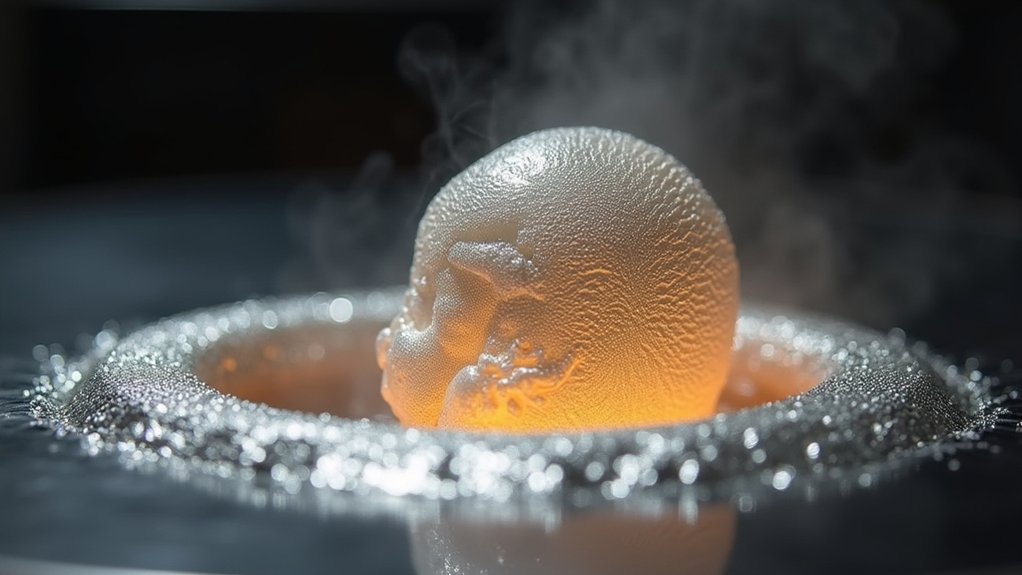
When you combine 3D printing with lost-wax casting technology, you’ll achieve extraordinary precision that captures every intricate detail of your original design in silver.
The process starts with your precise 3D-printed wax model, which becomes encased in investment material that hardens into a mold. This creates a cavity mirroring your original design’s exact specifications.
Your 3D-printed wax model gets encased in investment material, creating a precise mold cavity that mirrors every detail of your original design.
During burnout, your wax model melts away, leaving behind a void that retains all intricate details from the printed model. This guarantees perfect design transfer into metal.
The investment material quality greatly impacts your surface finish and detail retention during casting. High-quality investments designed for resin-compatible applications yield superior results, while proper casting temperatures and careful burnout schedules preserve your design’s finest details.
Cost-Effective Production for Custom Jewelry Creation
Beyond precision benefits, 3D printing dramatically reduces your jewelry production costs by eliminating traditional manufacturing waste and expensive tooling requirements.
You’ll save considerably on materials since resin models require minimal raw material compared to carving wax by hand. The casting process becomes more cost-effective because you can optimize wall thickness digitally before printing, ensuring you use only necessary silver amounts.
Your dynamic pricing model adapts to object modifications and volume, making small batch production financially viable.
Unlike conventional methods requiring expensive molds, you can create silver 3D prints through metal casting without upfront tooling investments. This approach enables experimentation with multiple design iterations at a fraction of traditional prototyping costs, making cost-effective production accessible for custom jewelry creators seeking innovative solutions.
Material Properties of Sterling Silver in 3D Applications
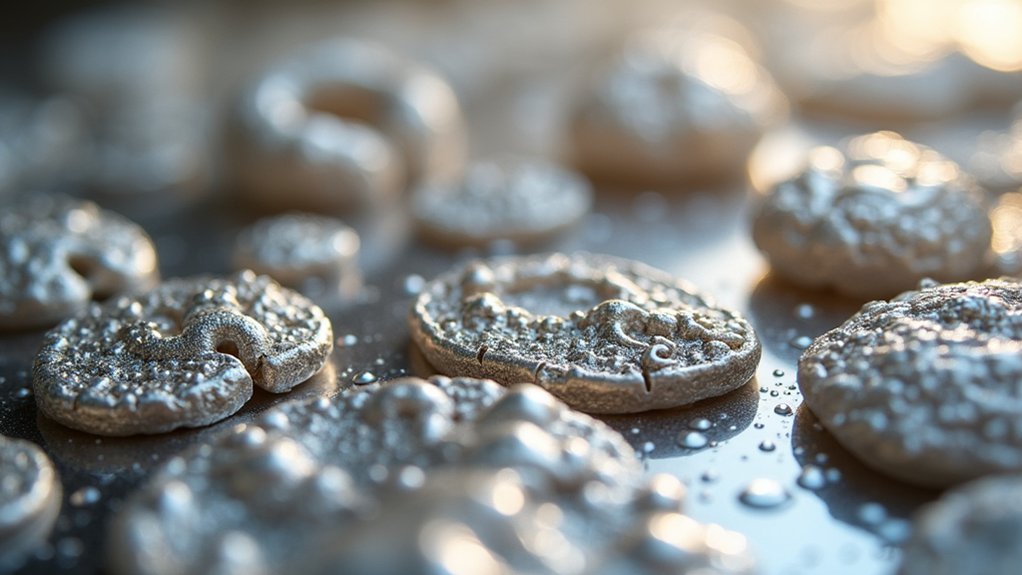
Sterling silver’s unique composition of 92.5% pure silver and 7.5% metal alloy creates an ideal foundation for 3D casting applications, delivering the perfect balance between workability and structural integrity.
When you 3D print and cast this metal, you’ll achieve superior material density and tensile strength compared to traditional manufacturing methods.
The casting process transforms your digital designs into durable final products with exceptional detail retention. You can create intricate jewelry pieces that maintain their structural integrity while showcasing complex geometries.
Sterling silver’s versatility shines through different finishes available:
- Raw finish for natural, organic appearance
- Mirror polish for brilliant reflective surfaces
- Antique finish for vintage aesthetic appeal
This combination eliminates visible printing layers, ensuring your final product rivals professionally manufactured jewelry with smooth, polished surfaces.
Design Freedom and Complex Geometry Capabilities
Traditional jewelry-making techniques pale in comparison to the design freedom that 3D printing reveals for silver casting. You can create complex geometries previously impossible with conventional methods, pushing creative boundaries beyond traditional limitations.
Your 3D models can incorporate intricate internal structures and hollow designs with multiple escape holes, producing lightweight pieces without sacrificing durability. The technology enables you to add fine details as small as 0.3 mm in diameter, creating visual depth and texture that enhances your silver casting’s appeal.
With minimum wall thickness requirements of just 0.5 mm, you’ll maintain structural integrity while achieving delicate aesthetics. Most importantly, you can craft personalized pieces that reflect individual style preferences, making each creation uniquely meaningful for its wearer.
Quality Control and Finishing Options for Professional Results

When you’re ready to transform your 3D-printed model into professional-grade silver jewelry, meticulous quality control becomes your foundation for exceptional results.
Start by thoroughly cleaning your castable resin model with 95% IPA to remove un-catalyzed resin, guaranteeing smooth surfaces that’ll translate beautifully to silver.
Your success depends on three critical elements:
- Proper burnout schedule – gradually heat from 150°C to 750°C to preserve intricate 3D print details
- Quality investment material – choose resin-compatible investments for cleaner burnouts and reduced polishing time
- Strategic finishing approach – use jeweler’s rouge and sandpaper for customizable results from raw to high-gloss finishes
This all-encompassing quality control process guarantees your unique jewelry pieces maintain the precision and intricacy of your original digital design while achieving professional-grade results.
Frequently Asked Questions
What Are the Advantages of Using a 3D Printed Arm Cast Over a Traditional Arm Cast?
You’ll experience better comfort with custom-fitted designs, lighter weight for easier mobility, improved airflow preventing skin irritation, faster production times, and personalized aesthetics that make you’re more likely to comply with treatment.
Is It Possible to 3D Print Silver?
You can’t directly 3D print silver using traditional methods. Instead, you’ll print a wax model with castable resin, then use lost-wax casting to pour molten silver into the mold.
Is 3D Printed Metal Stronger Than Cast?
Cast metal is typically stronger than 3D printed metal. You’ll find cast metals have more uniform density and fewer weak points, while 3D printed metals often contain layer lines that can compromise structural integrity.
How Much Does a 3D Printed Cast Cost?
You’ll pay based on your object’s total volume and size when uploading for printing. Prices fluctuate with design modifications, complexity, and finish selection, making costs dynamic rather than fixed for cast silver.
In Summary
You’ll find that casting silver from 3D printed models revolutionizes your jewelry-making process. You’re getting unprecedented precision while cutting costs markedly compared to traditional methods. You can create complex geometries that weren’t possible before, and you’ll maintain sterling silver’s excellent material properties throughout production. You’re also gaining better quality control and professional finishing options, making this technology essential for modern custom jewelry creation and small-batch production runs.

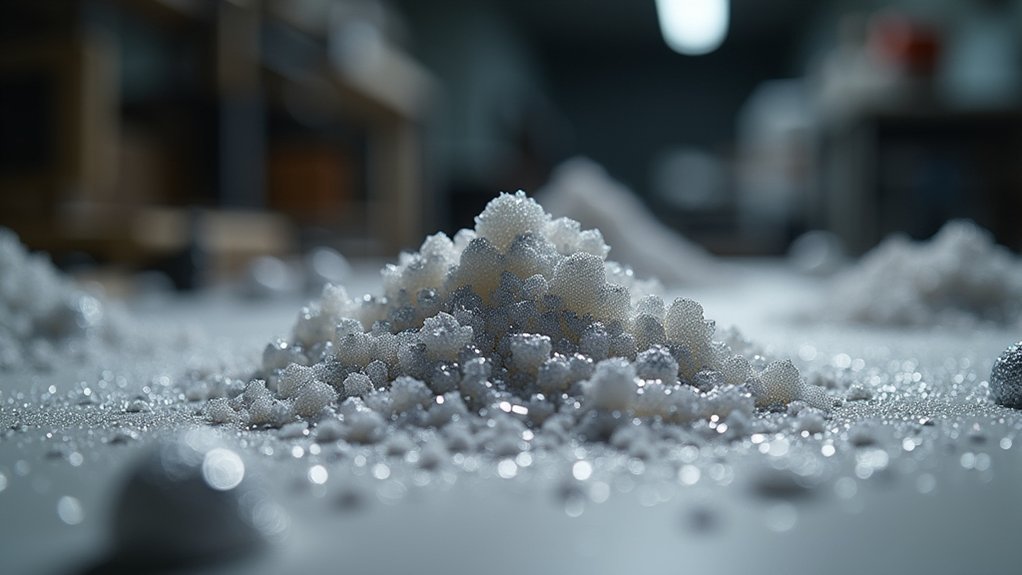
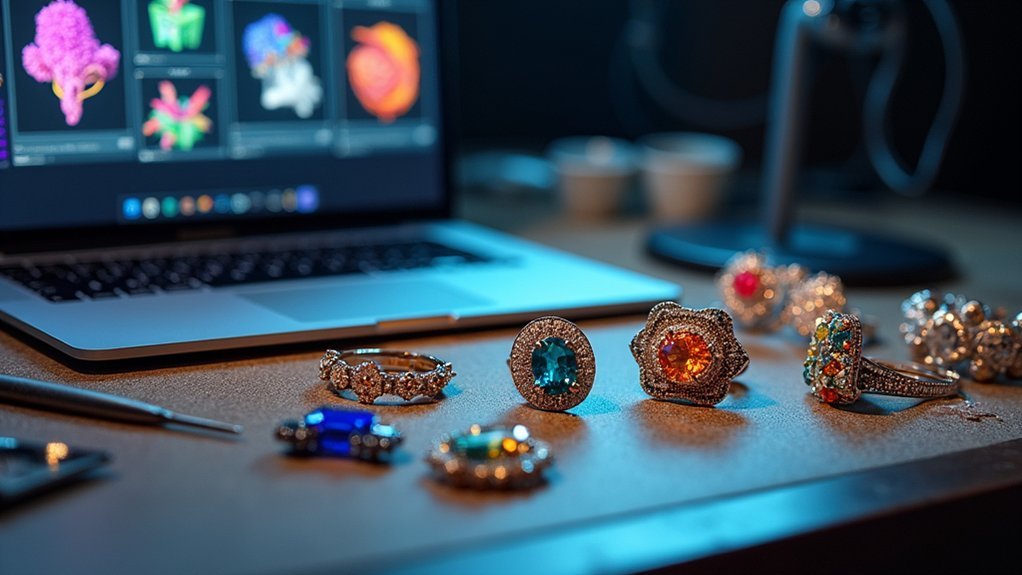
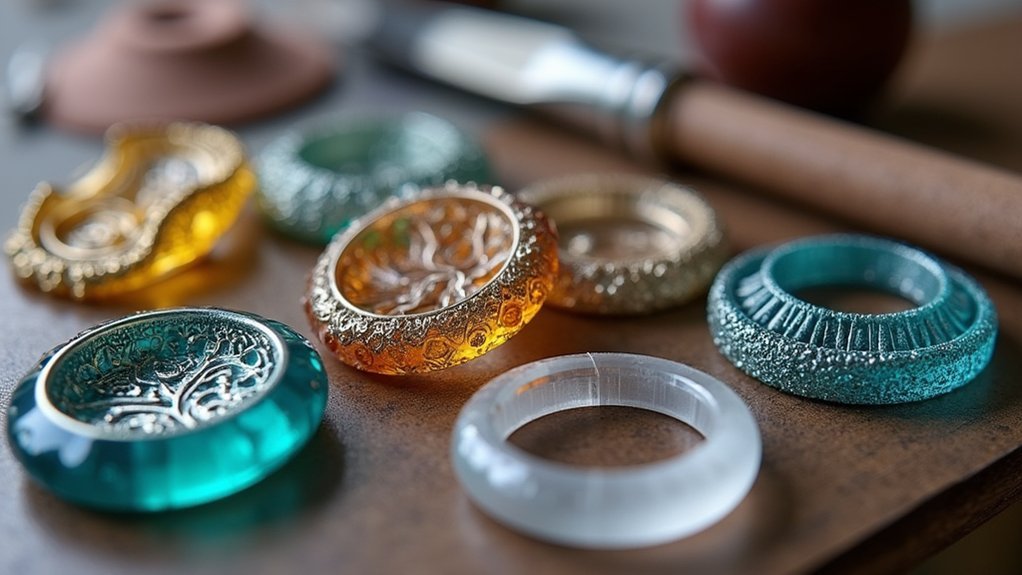
Leave a Reply